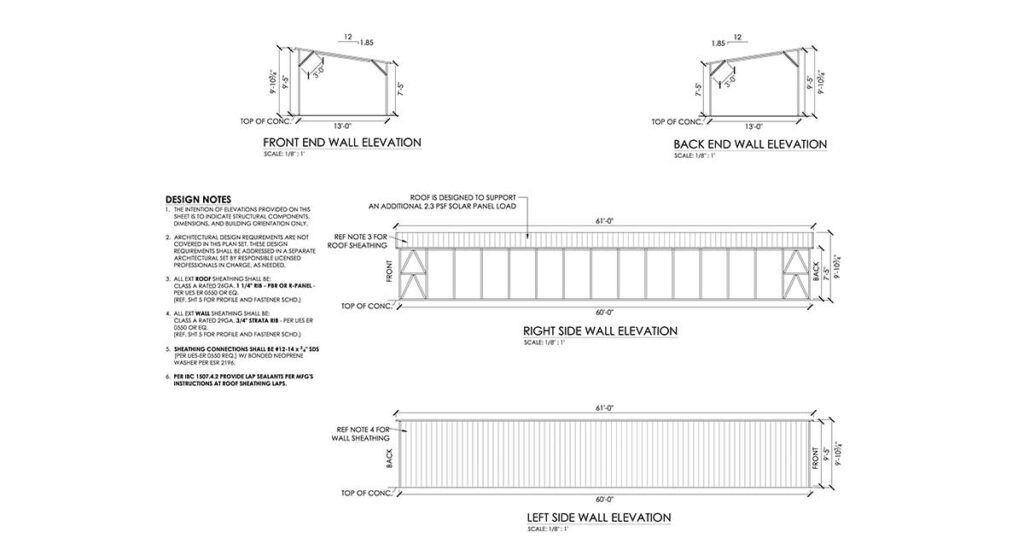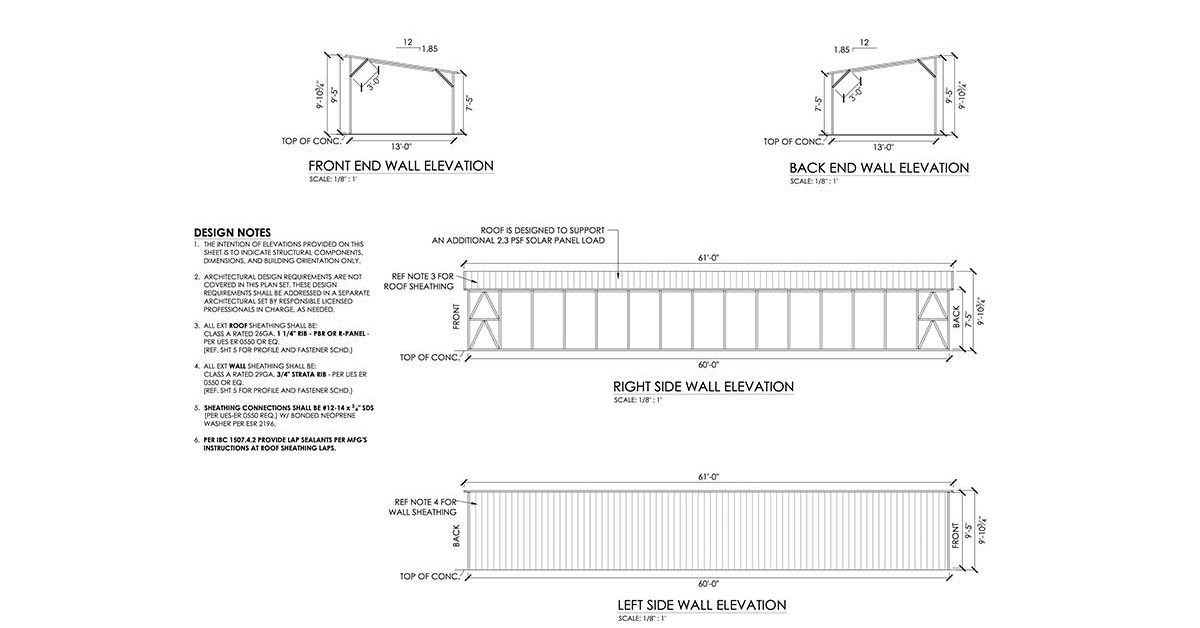Generic Plans vs. Site-Specific Plans for Metal Carports & Garages
When it comes to engineering plans for metal carports or garages, the choice between generic and site-specific plans can directly affect safety, compliance, and cost. Understanding the differences will help you select the right option for your project.
Understanding the Basics
Generic Engineering Plans
- Pre-designed for common sizes — typically 12–30 ft wide, up to 12 ft high, and up to 50 ft long.
- Come with fixed specifications and limited customization.
- Intended for standard, small-to-medium structures in mild climates.
- Faster and more affordable, but not always suited for unique site conditions.
- Usually do not include detailed structural calculations.
Site-Specific Engineering Plans
- Custom-designed for your location, loads, and needs.
- Account for snow load, wind speed, seismic activity, and soil type.
- Include wet-stamped drawings when required for permitting.
- Provide full customization on size, openings, and design elements.
- Offer structural calculations for compliance and peace of mind.
Key Differences at a Glance
| Feature | Generic Plans | Site-Specific Plans |
|---|---|---|
| Approved Dimensions | 12–30 ft wide, up to 12 ft high, up to 50 ft long | Fully customizable to your project |
| Side Wall Openings | Max 2 openings, ≤14 ft each | Any number and width of openings |
| Structural Calculations | Typically not included | Provided if requested or required |
| Climate Suitability | Best for mild climates | Engineered for extreme weather zones |
| Permit Approval | May be limited depending on jurisdiction | Often smoother compliance with local codes |
When to Choose Generic Plans
- Standard-size carports or garages.
- Projects in mild climates.
- Budget-conscious builds.
- Quick installation without complex permitting.
When to Choose Site-Specific Plans
- Projects with unique dimensions or designs.
- High snow load or high wind regions.
- Areas with strict county or city building codes.
- Locations with seismic risks or unstable soil.
- Commercial or industrial projects requiring compliance documentation.
Why Site-Specific Plans Are Worth It
- Customized Design – Tailored to exact dimensions, including large openings for equipment or vehicles.
- Location-Specific Engineering – Considers soil, seismic zones, and climate patterns.
- Load & Stress Analysis – Ensures structural safety against wind, snow, and seismic forces.
- Streamlined Permitting – Includes documents many building departments require.
- Material Optimization – Reduces waste and can lower construction costs.
County Building Code Requirements for Carports in California
Building codes for carports vary by county in California. While state guidelines set the foundation, local building departments determine specific snow load, wind speed, seismic, and anchoring requirements. Here’s a quick overview of what to expect in different regions:
- Placer County – Snow load requirements vary from 35–70 psf depending on elevation. Site-specific engineering is often required for structures over 200 sq. ft.
- El Dorado County – Plans stamped by a California licensed engineer are common in snow country and wildfire zones; roof snow loads can reach 60 psf at higher elevations.
- Shasta County – Typical snow load 30–60 psf with wind exposure category C or D depending on site.
- Humboldt County – Coastal areas need corrosion-resistant materials and wind ratings around 110–130 mph; inland sites often carry higher seismic considerations.
- San Bernardino County – Desert winds may require 115–130 mph ratings and specific anchoring details.
- Fresno & Central Valley – Mild snow loads but higher seismic design categories; larger spans often require engineered plans.
Tip: Always verify with your local building department before ordering to ensure your plan type meets permit requirements. Norcal Carports can coordinate with engineers to provide compliant designs for your county.
Benefits of Site-Specific Plans
- Enhanced Safety – Meets exact environmental loads.
- Optimized Performance – Better long-term durability.
- Reduced Risk – Fewer inspection issues.
- Design Flexibility – More layout and material options.
- Long-Term Value – Stronger structures that last decades.
Conclusion
While generic plans offer speed and affordability for standard builds, site-specific plans deliver the customization, compliance, and structural integrity needed for California’s varied environments. Whether you’re in a snow load zone, high-wind area, or seismic region, choosing the right plan type can save time, money, and frustration.
Norcal Carports works with certified engineers to provide both generic and site-specific plans. Contact us today for a free quote and let us help you get a structure that meets your needs—and your county’s requirements.


